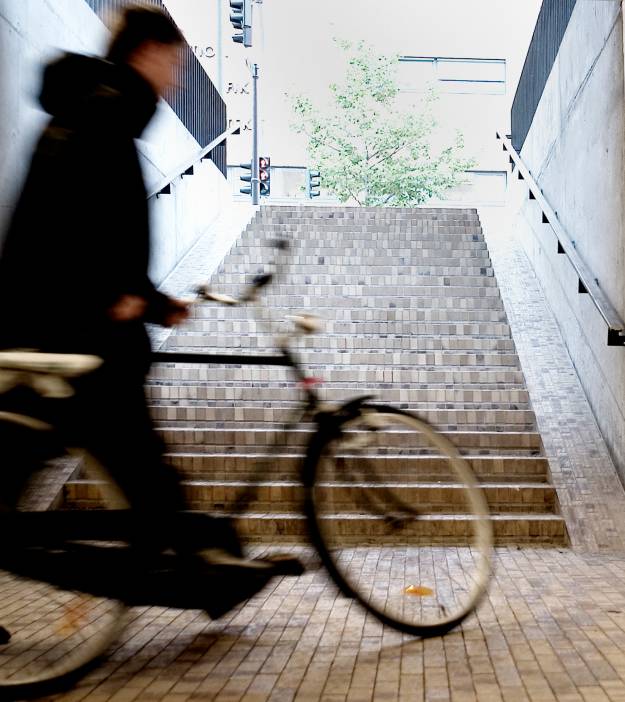British Cycling and Leeds City Council have today unveiled a vision for how one of Leeds’ landmark streets could look in the future, describing it as a ‘possible lasting legacy’ from Britain hosting the Tour de France.
Alongside Leeds City Council, British Cycling is calling on national government to commit just £10 per head per year from existing transport funds to every local authority in Britain to kick-start the cycling revolution that Prime Minister David Cameron called for in 2013.
In the week that the world’s eyes will be on The Headrow in Leeds - the start line for the Tour de France - Olympic champion Chris Boardman has launched an innovative £4 million vision for how the now-iconic street could be re-modelled to accommodate people on bikes every day as part of the city’s cycling legacy.
Commenting on the plans, British Cycling policy adviser, Chris Boardman, said:
“This would be a true legacy from Britain hosting the Tour de France. Inspiring people to get on bikes is one thing but the fact is that cycling has been designed out of our towns and cities and we urgently need to put this right.
“Millions of people in Britain say they would like to cycle but they are put off due to safety fears. We cannot pretend that this is going to miraculously change. National government need to face up to some hard truths and commit adequate investment. It’s important to clarify, we are not asking for more money but for a tiny fraction of the existing provision to be targeted as part of a long term plan to remodel our urban landscapes.
British Cycling's vison for the Headrow, Leeds
Hover over the image to find out more (image: Steer Davies Gleave)
“Accommodating the needs of people young and old is not cheap but it’s 10 times cheaper than meeting the mammoth annual costs of treating obesity-related illnesses such as heart disease and diabetes.
“We’re starting today with a new vision for Leeds city centre but we want this ambition to be realised nationwide. This isn’t just about cycling, it’s about creating accessible, pleasant, healthier places to live and work. It isn’t even a cycling project, it’s a logical, people-first, evidence-based vision with no down sides.”
Developing closer ties with British Cycling is one of the elements outlined in Leeds City Council’s own Tour legacy vision 'Leeds: Cycling Starts Here', released last month. It aims to use the unique opportunities offered by the Tour de France and the regional Cycle Yorkshire strategy to further enhance cycling provision in the city.
This includes building on the 82-kilometres of cycle ways and lanes that exist within the city, plus providing more Bikeability rider training and awareness sessions, and the forthcoming £29m City Connect project between Leeds and Bradford.
Leader of Leeds City Council, Councillor Keith Wakefield, said:
“We are firmly committed to maximising every possible benefit from the city hosting the Tour de France.
“As we outlined in our legacy vision, we want to put cycling at the heart of the future of Leeds, building on our existing relationships with fantastic partners like British Cycling to bring about significant benefits in a range of areas such as health and wellbeing, transport, leisure, the environment and the economy.
“That is our long-term aim to do everything we can to encourage and help as many people as possible to get cycling.”
The benefits of remodelling The Headrow include:
- A reduction of motor traffic by 40%, encouraging more walking and cycling, giving the road a much more spacious feel
- An estimated trebling of cycling levels and reduction of injuries by a quarter
- Creating a more attractive space in an iconic setting
The £4 million remodelling cost of The Headrow would include:
- Introduction of a 20mph speed limit
- ‘Boulevard’ design with wide open spaces, textured paving and trees
- Closing the road to private cars, allowing buses, taxis and cycles only
- Widening of footways and low kerbs for easy wheelchair and cycle access
- Removal of all guard rails and most street furniture
- The inclusion of a cycle-bypass
- Safe junctions with separate signal phase for cycles












